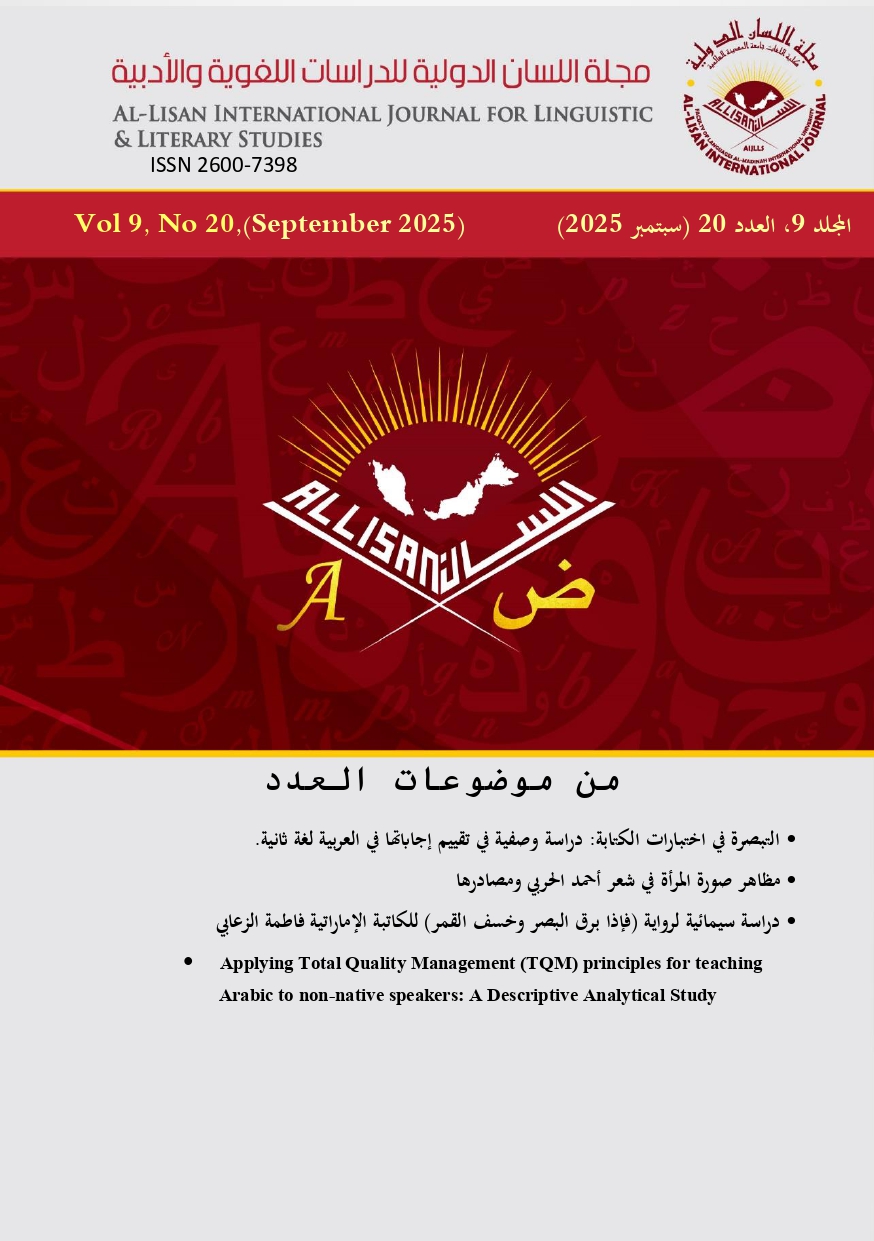Aspects of the image of women in the poetry of Ahmed Al-Harbi and their sources (an analytical study)
Main Article Content
Abstract
Abstract: This research aims to reveal the manifestations of the image of women and its sources as one of the most prominent topics that the poet Al-Harbi addressed and his poetry was concerned with. Its importance is evident in its attempt to highlight how the poet used the image of women, and how he presented it aesthetically and artistically. The problem of the research lies in revealing an urgent matter in the poetry of Ahmed Al-Harbi, which is the extent of the presence of the image of women and its multiple manifestations in his poetry in reality, and whether he made it a symbol of the ideas and visions that the poet adopts. The researcher used the descriptive and analytical approach to uncover these images and display them aesthetically. The research consisted of an introduction, a theoretical framework, and two chapters. The first: the multiplicity of the image of women in the poet’s texts, and the other: the manifestations of the image of women in his poetry, then the results followed by sources and references. The research came out with a number of results represented in the following: The poet Ahmed Al-Harbi is considered one of the prominent Saudi poets who frequently mention women in their poetry, as they have been given a large space in his poetry, and this is due to his literary and cultural formation, which he derived from his experience with women in his life. Al-Harbi's portrayal of women has taken many forms, including the beloved, the broken, the struggling, the educated, the inspiring, and the divorced. Al-Harbi is distinguished by his imaginative artistic ability to draw inspiration from these forms, employ them, and artistically address them to enrich the recipient's psychological state. This is a good vision that represents human awareness and understanding of life and art issues. The sources of the image of women in Al-Harbi's poetry are diverse, including social, environmental, and religious sources, as topics of daily life have contributed significantly to shaping his poetic image of women.

